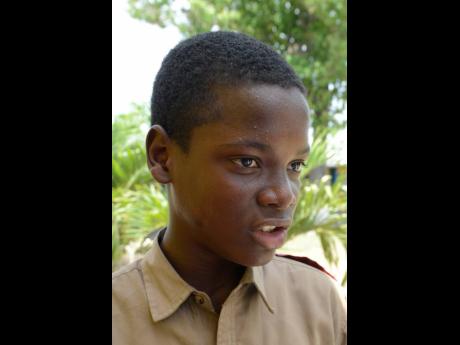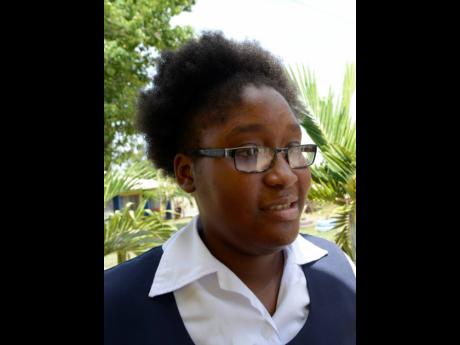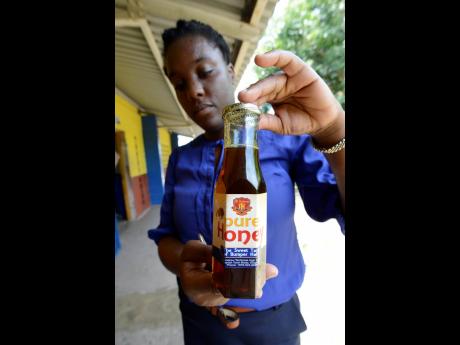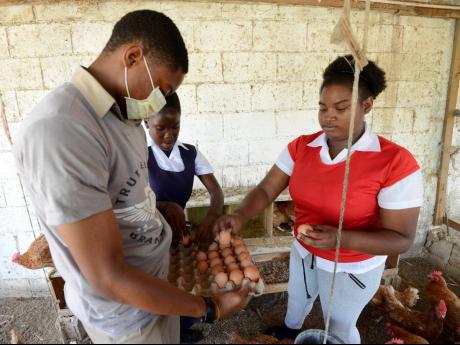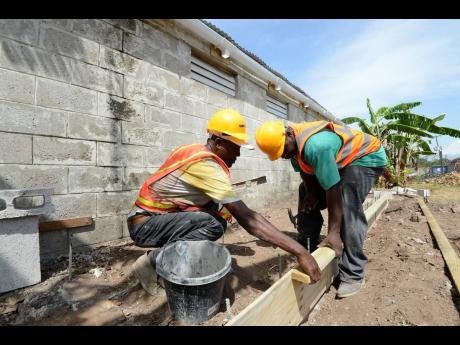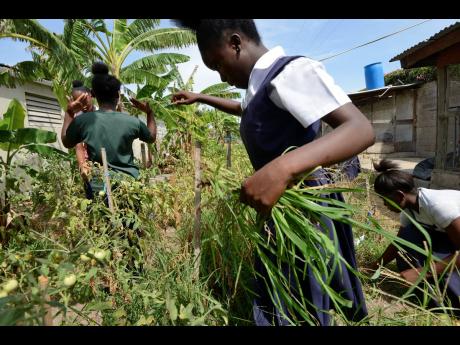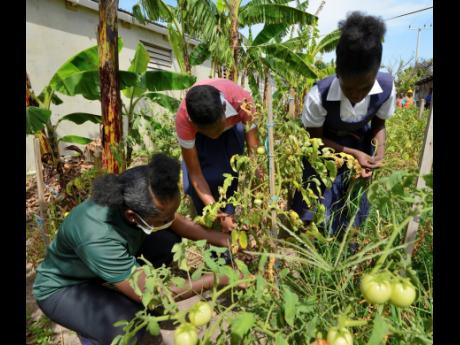Farming in the City: STATHS building a legacy of agricultural science
Audley Sanson, head of the agricultural department at the St Andrew Technical High School (STATHS), is convinced that his school has the best agricultural science programme in the country.
In fact, he has a five-year plan of making it the best programme in the Caribbean.
When THE STAR team visited the school, Sanson proudly led us around the farm, which was sectionalised in different areas on the compound.
Sanson said he started the programme 24 years ago with a few rows of callaloo and 23 students.
Now, the programme has grown to include both crop and livestock rearing. Scattered on the school’s compound are plots where produce such as corn, sweet pepper, tomato, garden egg, cabbage, pak choi, plantain, and yam are planted.
There’s also a thriving apiary, a chicken coop for layers, a greenhouse, and a pig pen. The school even has a slaughter house equipped with a defeathering machine.
Sanson said the school practises subsistence farming. The produce from the farm is used in the school’s canteen, and the remainder sold to the school’s staff, at a price slightly below market value.
Agricultural science is embedded in the school’s curriculum and students are introduced to it from grade seven.
Each year, Sanson said, up to 40 students sit the subject at Caribbean Secondary Education Certificate and Caribbean Advanced Proficiency Examination levels, and the school boasts a 100 per cent pass rate.
He said STATHS takes a holistic approach to developing the programme.
“What we try to do here at STATHS is to integrate the technical areas. So if we’re gonna fix the fowl house, we get the building construction teacher to be a part of it. If we’re going to do any welding, we get those students involved; and we have the 4-H students doing our water harvesting,” he said
But this legacy of farming that Sanson is determined to build at STATHS is not without its challenges.
STIGMA ATTACHED
“Majority of my students are from the inner-city communities. And there’s the whole stigma when it comes on to where they’re living,” he said.
His passion for the subject is contagious, and he, along with the two other agricultural science teachers, find ways to get the students involved and interested.
“They don’t really like to be indoors, they like to be open and out there. So a programme like agricultural science for these students works magic,” he said. “At the end of the day, some tend to go back to their little space, and they practise. So they’ll tell you that they started with five chickens, some will have a row of callaloo.”
But there’s one challenge that up until recently, Sanson and his staff found unbearable – the drought.
“For some reason, at this time of the year, it makes no sense we practise agriculture. My grade-10 students, in short order, they will be assessed, and they’ll need to get the practice. So some of the times when the moderators come, we don’t really have nothing to show in terms of crops. And it goes against them,” he said. “But I can say, thanks to 4-H and other stakeholders, we’re now erecting tanks for rainwater harvesting.”
Currently, the programme is funded by the school. But Sanson is hoping to get other stakeholders on board to offer scholarships to his students.
“I would love to see all of my 14 students on scholarships to CASE [College of Agriculture, Science and Education], where they can do food processing. But, unfortunately, we don’t have a system like that where we can move them. Many of my students are from the most violent inner-city areas, and they are the ones who are doing extremely well, but they are not able to move beyond STATHS,” he said.





























